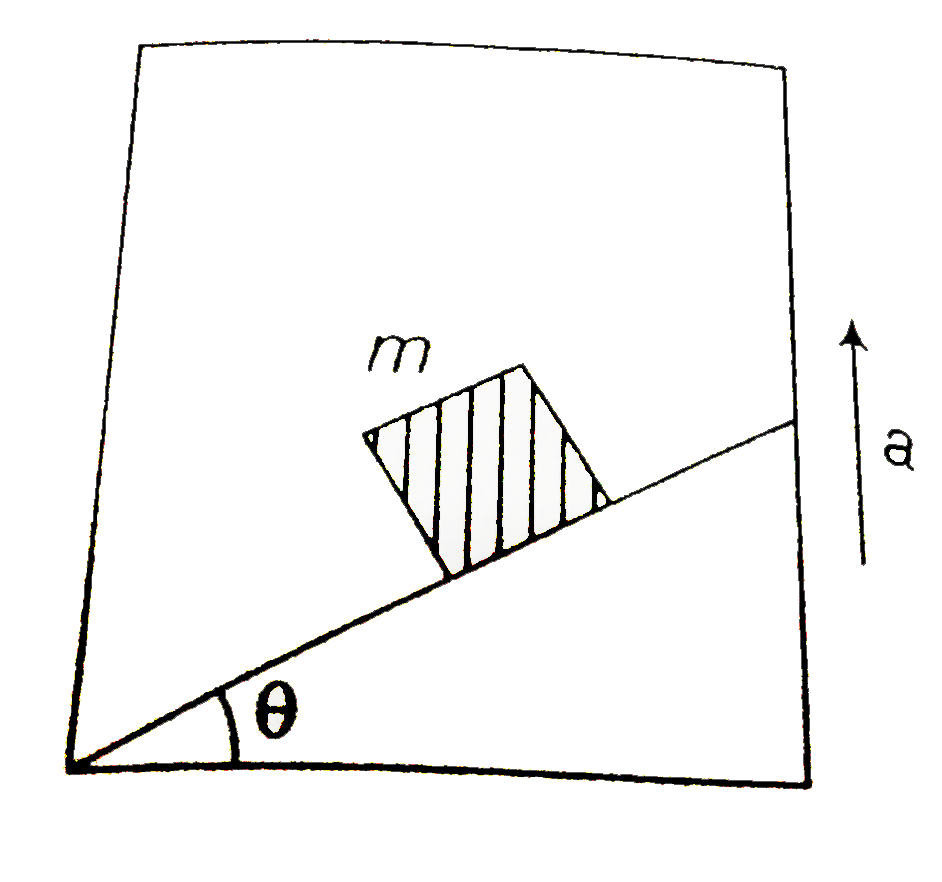These questions consists of two statements each printed as Assertion and Reason. While answering these question you are required to choose any one of the following four responses
Assertion Friction opposes motion of a body.
Reason Static friction is self adjusting while kinetic friction is constant.
The correct Answer is:D
To solve the question, we need to evaluate both the Assertion and the Reason provided.
Step 1: Analyze the Assertion
The assertion states: "Friction opposes motion of a body."
- Friction is a force that acts between two surfaces in contact. It generally opposes the relative motion between those surfaces. Therefore, the assertion is partially correct because while friction does oppose the relative motion, it can also support motion in certain scenarios (e.g., walking).
Step 2: Analyze the Reason
The reason states: "Static friction is self-adjusting while kinetic friction is constant."
- Static friction can vary in magnitude from zero up to a maximum value (the limiting friction), depending on the applied force. This means it adjusts itself to prevent motion until a certain threshold is reached. Kinetic friction, on the other hand, remains constant once the motion has started. Thus, the reason is correct.
Step 3: Conclusion
- Since the assertion is partially incorrect (as it does not fully capture the nature of friction) and the reason is correct, we conclude that:
- Assertion (A) is false.
- Reason (R) is true.
Final Answer
The correct response is D: Assertion is false, Reason is true.
---
The assertion states: "Friction opposes motion of a body."
- Friction is a force that acts between two surfaces in contact. It generally opposes the relative motion between those surfaces. Therefore, the assertion is partially correct because while friction does oppose the relative motion, it can also support motion in certain scenarios (e.g., walking).
The reason states: "Static friction is self-adjusting while kinetic friction is constant."
- Static friction can vary in magnitude from zero up to a maximum value (the limiting friction), depending on the applied force. This means it adjusts itself to prevent motion until a certain threshold is reached. Kinetic friction, on the other hand, remains constant once the motion has started. Thus, the reason is correct.
- Since the assertion is partially incorrect (as it does not fully capture the nature of friction) and the reason is correct, we conclude that:
- Assertion (A) is false.
- Reason (R) is true.
The correct response is D: Assertion is false, Reason is true.
Similar Questions
These questions consists of two statements each printed as Assertion and Reason. While answering these question you are required to choose any one of the following four responses
Assertion Static friction acting on a body is always greater than the kinetic friction acting on this body.
Reason Coefficient of static friction is more than the coefficient of kinetic friction.
View SolutionThese questions consists of two statements each printed as Assertion and Reason. While answering these question you are required to choose any one of the following four responses
Assertion The weighing machine measures the weight of a body.
Reason Weightlessness means the absence of weight.
View SolutionThese questions consists of two statements each printed as Assertion and Reason. While answering these question you are required to choose any one of the following five responses.
Reason: In an eleastic collision, the linear momentum of the system is conserved.
View SolutionThese questions consist of two statements each, printed as
Assertion and Reason. While answering these questions you are
required to choose any one of the following four responses:
Assertion: [Co(NO2)3(NH3)3] does not show optical isomerism.
Reason: It has a plane of symmetry.
View SolutionThese questions consists of two statements each printed as Assertion and Reason. While answering these question you are required to choose any one of the following four responses
Assertion In the figure shown, block of mass m is stationary with respect to lift. Force of friction acting on the block is greater than mgsinθ.
Reason If lift moves with constant velocity, then force of friction is equal to mgsinθ

View SolutionThese questions consists of two statements each printed as Assertion and Reason. While answering these question you are required to choose any one of the following four responses
Assertion A particle is thrown vertically upwards. If air resistance is taken into consideration then retardation in upward journey is more than the acceleration in downward journey.
Reason Some mechanical energy is lost in the form of heat due to air friction.
View SolutionThese questions consists of two statements each printed as Assertion and Reason. While answering these question you are required to choose any one of the following four responses
Assertion Two forces are acting on a rope lying on a smooth table as shown in figure. In moving from A to B, tension on string decrease from 2F to F.

Reason Situation will becomes in determinant, if we take it a massless string.
View SolutionThese question consists of two statements each printed as Assertion and Reason. While answering these question you are required to choose any one of the following five responses.
Assertion: Emissive power of a perfectly black body is one.
Reason: Absorptive power of perfectly black body is one.
View SolutionThe question consist of two statements each, printed as Assertion and Reason. While answering these questions you are required to choose any one of the following four responses:
Assertion: Charge on the complex of ferric ion with EDTA is minus one.
Reason: EDTA is a hexadentate ligand.
View SolutionThese questions consists of two statements each printed as Assertion and Reason. While answering these question you are required to choose any one of the following four responses
Assertion A string has a mass m. If it is accelerated, tension is non-uniform and if it is not accelerated, tension is uniform.
Reason Tension force is an electromagnetic force.
View Solution
